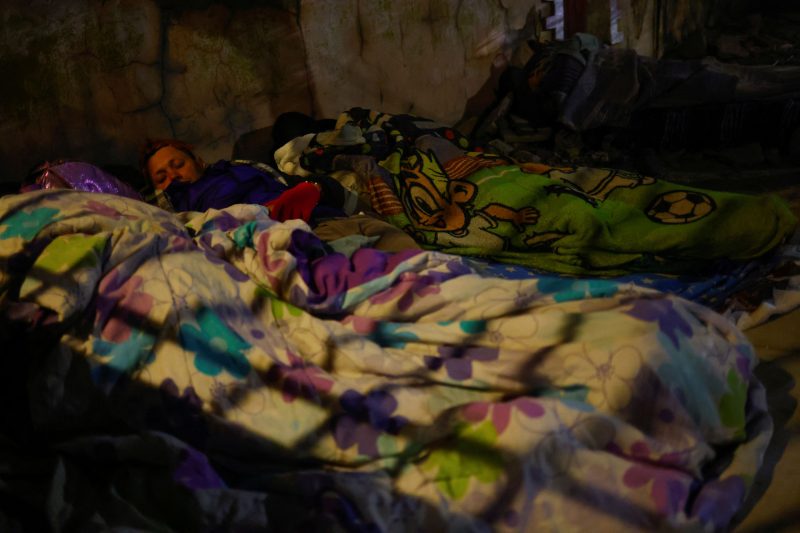When U.S. Customs and Border Protection introduced the CBP One mobile application two years ago, it was largely geared toward commercial trucking companies trying to schedule cargo inspections. Border officials hoped to build on the success of programs such as Global Entry and TSA PreCheck that collect information in advance while offering travelers speedier passage, allowing them to avoid some of the onerous security checks implemented after the terrorist attacks of Sept. 11, 2001.
Now the CBP One app is taking on a central role in the Biden administration’s plan to overhaul asylum screening at the border and slash illegal crossings. The number of migrants intercepted along the U.S. southern border reached record levels during the president’s first two years in office, and with immigration likely to remain a galvanizing issue in the 2024 election, Biden officials are under pressure to address a major political vulnerability.
New technology is key to their strategy. Authorities are already using CBP One to process migrants asking for an exemption to pandemic-era border restrictions, and to coordinate travel for up to 30,000 migrants from Cuba, Haiti, Nicaragua and Venezuela who the administration is allowing to legally enter the United States each month through a program known as “parole.”
The app will soon take on an even bigger role, as the Biden administration aims to use CBP One as a gateway to the U.S. asylum system. Homeland Security and Justice Department officials are preparing to announce a new rule this month that will penalize asylum seekers who cross into the United States illegally or fail to apply for protection in countries they transit en route to the U.S. southern border. The measure will instruct asylum seekers to use CBP One to request an appointment at an official U.S. port of entry, which officials say will facilitate a more orderly process while minimizing disruptions to regular trade and travel.
The Biden administration’s expanding use of the app has triggered criticism across the political spectrum. Immigrant advocates say CBP One disadvantages vulnerable migrants, while hard-liners claim it’s facilitating Biden policies they denounce as “open borders.”
Luis Miranda, a spokesperson for the Department of Homeland Security, called the CBP One app “a transparent and publicly accessible way to schedule appointments for migrants.”
“This app cuts out the smugglers, decreasing migrant exploitation, and improving safety and security in addition to making the process more efficient,” Miranda said. “This is part of the administration’s goals to create legal, safe and humane processes while imposing consequences on those who do not use available processes.”
Attorneys and migrant advocates working at shelters in northern Mexico say CBP One is prone to crash or kick users off right at the moment they attempt to upload their data. The app has more than 500,000 downloads from the Google Play store, but a rating of 2.4 stars — lower than other CBP apps available on the site. Its reviews on the App Store are no better.
Of greater concern to immigrant advocates are claims the app’s facial-capture feature is prone to malfunction for users with darker complexions. They say family groups face obstacles because available slots are so scarce. And advocates say destitute asylum seekers who may be in grave danger don’t necessarily have smartphones with reliable internet access.
The app is “fine as a tool in the toolbox, but it cannot be the only access point to asylum,” said Chelsea Sachau, an attorney with the Arizona-based Florence Project, which provides legal aid to migrants and asylum seekers. “Asylum seekers have due process rights, and reliance on this app alone will never be sufficient.”
Sachau, who works with clients in the Mexican border city of Nogales, said her team has seen the app’s facial capture software reject identical twins — apparently assuming them to be the same person — and babies who don’t sit still.
“The biggest headache is that there are too few spots, so people are trying every morning to enter the app,” Sachau said. “It’s like trying to get tickets for a Taylor Swift concert, only it’s not a concert, and you’re trying to save your family’s life.”
During the Trump administration, immigrant advocates criticized a different CBP queue-management practice known as “metering,” in which the agency limited the number of people allowed each day to approach U.S. ports of entry to request asylum. Informal, handwritten waiting lists for those slots grew to thousands of names. Mexican authorities managed the queue in some border cities; reports of abuse and corruption were rife.
CBP One solves that problem, said Seth Stodder, who worked as a DHS official during the Obama and George W. Bush administrations. “This is a different way of forming a queue that is more efficient and less amenable to crime,” he said. “It’s different from the metering system where criminal organizations buy and sell spots in line. It’s like getting a reservation at a restaurant, and they text you when your table is ready.”
That type of casual efficiency has chafed groups who want tighter border controls. They say the administration is using the app to speed up the entry of migrants who don’t qualify for admission under U.S. immigration laws.
“Instead of an OpenTable app, this is an open border app,” said Mark Krikorian, the executive director of the D.C.-based Center for Immigration Studies, referring to the popular online restaurant reservation tool. Krikorian, whose group seeks to curb all immigration to the United States, said he visited a migrant shelter in northern Mexico recently where he saw migrants struggling to use CBP One.
“But that’s not the problem,” he said. “The problem is unauthorized people are being let into the United States beyond the limits that were set by Congress. Whether that is done in an orderly way or a disorderly way is not important. None of these people are supposed to be allowed into the United States, and the administration is flouting the law.”
Biden officials say their expansion of legal migration options, especially the 30,000 monthly “parole” slots announced in Jan. 5, has unlocked Mexico’s willingness to help crack down on unlawful crossings.
In the weeks since the parole program was announced, illegal crossings from Mexico by migrants from Cuba, Haiti, Nicaragua and Venezuela plunged 97 percent, Biden said during his State of the Union address. Biden officials point to those numbers as evidence their carrot-and-stick approach is working, and they say they are acting swiftly to fix technical issues with CBP One.
They reject claims the app’s facial capture feature is skewed against applicants with darker complexions. Last week 40 percent of the applicants who used CBP One to obtain an exemption from public health restrictions at the border were Haitian, according to DHS, an indication that no particular group has been discriminated against, officials said.
Other claims of CBP One flaws reported by advocates and attorneys “are not accurate,” a senior Biden official told reporters during a recent media briefing. In some cases, the official said, the flaws reflect a need for more accurate error messages to show the program has reached its maximum daily capacity.
“The reason people think the app ‘crashes’ is because all of the available slots that day fill up,” said the official, who spoke on the condition of anonymity under ground rules set by the administration. “The error messages that the app produces don’t clearly articulate that, so we are working on that so that it’s clear to individuals, who, for example, are trying to take their picture through the app, that the reason they weren’t able to complete the process is not because the app didn’t capture their picture, but because the slots on that day were filled.”
The facial capture feature does not compare images in a database, but acts rather as a “liveness detection” tool to make sure someone isn’t attempting to access CBP One by holding a photograph up to the phone, according to DHS. And the requirement that users show their face each time they log on is a safeguard against scammers who could try to book appointment slots in bulk and sell them.
DHS officials note they have added Haitian Creole to the list of languages available through CBP One — a sign, they say, of the administration’s determination to improve the app and expand its accessibility. They said they are also fixing error messages that only displayed in English.
The administration’s new border strategy is facing other challenges in federal court. Twenty states, led by Texas Attorney General Ken Paxton (R), are suing to block the parole program, calling it an abuse of executive authority that places an undue financial burden on state budgets.
Biden officials say the lawsuits could cut off new legal pathways that are helping to incentivize lawful behavior. The suits could also jeopardize Mexico’s willingness to take back migrants who are difficult for U.S. authorities to deport because of strained diplomatic relations with Cuba, Nicaragua and Venezuela.
The Biden administration’s plans to end the pandemic-era public health restrictions at the border known as Title 42 has created urgency for authorities to get their new management system in place. The government is currently using the restrictions to quickly turn back migrants from Cuba, Haiti, Nicaragua, Venezuela and other nations who cross illegally. But Title 42 is scheduled to lift May 11 when the White House plans to allow the pandemic public health emergency to expire.
Administration officials told the Supreme Court in a briefing earlier this month that Mexico has decided to take back migrants from those nations as deportees after the public health restrictions end. But officials have since appeared to contradict that statement, saying they have not reached an agreement with Mexico and do not intend to send large numbers of deportees back across the border.
The Supreme Court last week canceled a hearing scheduled for March 1 in a separate matter filed by Republican state officials seeking to compel the administration to extend the Title 42 public health restrictions at the border.
The Justice Department had told the court the case would be rendered moot by the White House plan to lift the public health emergency on May 11. The court gave no explanation for taking the case off its calendar, but the action indicated justices saw no reason to hold arguments if developments make their intervention unnecessary.
Robert Barnes contributed to this report.



























